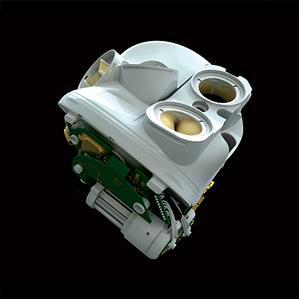Forget about spending big bucks on scary, doctor's office procedures. Celebrity dermatologist and Skin Rules author Deborah Jaliman, M.D. reveals how to erase the years at home and on the cheap.
By Ava Feuer
Dark spots and uneven texture are dead giveaways to your true age. Keep fooling folks by applying an at-home retinol every night. "It's one of the few things that reverses sun damage," says Jaliman. "It will lighten brown spots, improve texture, and make skin smoother. You can see a difference in weeks." By stimulating collagen production, the inexpensive remedies cause dead skin to slough off faster, eliminating signs of ware and dullness. But be aware that retinols make skin particularly sensitive to sunlight, so after applying one at night, be extra-sure to wear at least SPF 30 the next morning. Jaliman likes Neutrogena's Rapid Wrinkle Repair Night Moisturizer.
Use a retinol
Dark spots and uneven texture are dead giveaways to your true age. Keep fooling folks by applying an at-home retinol every night. "It's one of the few things that reverses sun damage," says Jaliman. "It will lighten brown spots, improve texture, and make skin smoother. You can see a difference in weeks." By stimulating collagen production, the inexpensive remedies cause dead skin to slough off faster, eliminating signs of ware and dullness. But be aware that retinols make skin particularly sensitive to sunlight, so after applying one at night, be extra-sure to wear at least SPF 30 the next morning. Jaliman likes Neutrogena's Rapid Wrinkle Repair Night Moisturizer.
Get your vitamin B
You likely get your necessary supply of B3, a vitamin that helps treat osteoarthritis and may lessen the risk of Alzheimer's disease, in meats, eggs, green vegetables and beans. But when it comes to your skin, it's best to apply the B vitamin, which is also known as niacin, topically. The anti-inflammatory is particular effective at reversing sun damage in those who suffer from acne or rosacea. Jaliman uses AzaClear in her office, but also recommends StriVectin TL Tightening Face Serum..
Try a sonic cleansing system
"A lot of what's causing people to look older is a build-up of dry skin," says Jaliman. A great way to exfoliate without irritating skin, sonic cleansing devices are far more effective than your run-of-the-mill scrub. "I've actually tried to use an exfoliant and then used a white towel, and I see how much dead skin, makeup, and dirt are still on my face," says Jaliman. "You use a sonic cleansing system, and you see there's nothing left." She likes Clarisonic for its swappable heads, but if you're on a tight budget, Olay Professional's Pro-X Advanced Cleansing System and Neutrogena's Wave Sonic are also good options.
Use a white sunscreen
If your sunblock is clear, it's time to toss that tube. Europe recently banned the transparent formulas because they contain nanoparticles, which can enter the bloodstream and liver. Although the FDA hasn't yet approved the same regulation, this is one trend worth getting ahead on. As long as sunscreen comes out of the bottle white — no matter how easily it rubs in — the formula is safe to use. The American Academy of Dermatology now recommends applying at least SPF 30 every day, and nothing says old age like sun damage-induced wrinkles, so heed this advice.
Don't use your hands
Regardless of how vigilantly you wash your hands, bacteria becomes trapped underneath your fingernails. When you use your fingers to scrub off makeup or to apply cleanser, that grime travels to your skin. Washcloths, which aren't laundered after every use, present the same problem. Instead, use a cotton pad, and follow cleansing with a swipe of a glycolic or salicylic acid-soaked pad, like Philosophy's Clear Days Ahead. "It takes me 30 seconds to do this — and to apply an anti-aging cream," says Jaliman. "It's about getting into the habit, like brushing your teeth."
Grow younger with your moisturizer
Less well-known than antioxidants but perhaps more effective, cytokines, a naturally occurring plant growth factor, have been shown to stimulate cellular growth and collagen production. With that skin cell turnover comes the opportunity for new, fresher looking cells to emerge, reducing fine lines, wrinkles and skin roughness. Unlike petri-dish-made growth factors, cytokines are unlikely to irritate skin, making them ideal for every day use. Find the ingredient in Kinerase Lotion for All Skin Types




![Psicologia da Cor [Infográfico]](http://mexxer.pt/wp-content/uploads/2013/04/psychology-of-color.jpg)





















